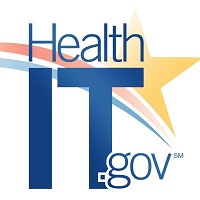 By Wes Barker, Vaishali Patel, and Jeff Smith, ONC
By Wes Barker, Vaishali Patel, and Jeff Smith, ONC
Twitter: @ONC_HealthIT
Using APIs “without Special Effort”
The ONC’s Cures Act Final Rule (Cures Rule) supports patients’ and providers’ access to electronic health information (EHI) through Health Level Seven (HL7®) Fast Healthcare Interoperability Resources (FHIR®) application programming interfaces (APIs). FHIR is ready for prime-time and the Cures Rule requires certain developers of certified health IT to provide a certified, FHIR API to their customer base by December 31, 2022.
To ensure these certified APIs can be accessed and used “without special effort”, the Cures Rule API Conditions and Maintenance of Certification contains a specific requirement that “service base URLs” – otherwise known as “endpoints” – must be published for all customers and in a machine-readable format at no charge. These electronic endpoints are the specific locations on the internet that make it possible for an app to know where to go to access health information on behalf of the users.
ONC developed the Lantern tool to monitor the nationwide implementation of FHIR APIs and to learn how easy it was to obtain their endpoints. Throughout the development of the Lantern tool, ONC worked with stakeholders to develop consensus around a standard format to publish these endpoint lists. This work identifies endpoint data that should be made available in order to facilitate interoperable linkages to these endpoints.
Current Guidance on FHIR Endpoint List Publication
The Lantern tool consumes public endpoint information, tests the accessibility of these endpoints, and then reports capability information to its public-facing dashboard. Through Lantern, we found variability in the publication of public endpoint lists, which makes it difficult for Lantern and other potential users of endpoints to consume the information in a systematic manner.
To help ensure greater consistency in data publication across developers, in May 2021 ONC recommended that health IT developers certifying to the new FHIR-based API certification criterion use the FHIR Endpoint resource to publish endpoint lists (for more information see the API Conditions and Maintenance of Certification requirements ). The more health IT developers that follow this approach the more standardized and consistent the ingestion of endpoints can be, without the need for potential customizations to process individual lists.
While our recommendation can help add needed consistency across the community, there is more work to be done! The current structure of the FHIR Endpoint resource allows for listing only one organization: the managing organization of the endpoint. Through Lantern we found that the managing organization may represent one of many organizations that are serviced by the endpoint.
Having all health care organizations serviced by the endpoint accessible and in a standardized format would go a long way in meeting the Cures Rule’s goals for using APIs without special effort. In so doing, app developers would be able to easily fetch these endpoints to build accurate and comprehensive endpoint lists to better aid users select from where they want to access electronic health information. Standardized endpoint publication would also simplify the Facilitated and Brokered FHIR Exchange models of the recently launched Trusted Exchange Framework and Common Agreement (TEFCA). Thus, one of the key questions that needs to be addressed is “How do we get all associated organizations serviced by an endpoint?”
Proposed Approach for FHIR Endpoint List Publication
During a December 2021 workshop, one approach discussed focused on publishing endpoint information in the FHIR Endpoint resource format and corresponding FHIR Organization resources be made publicly accessible outside the FHIR server’s authentication/security framework. This would allow a user to query a publicly accessible endpoint’s system for associated organizations and retrieve them in the standardized FHIR format already supported by the system.
Workshop participants provided feedback on the value of greater standardization and, specifically, this new approach. In general, there was broad agreement that standardization of endpoint list publication would benefit both the developers and the users of certified API technology. We will continue to support the community in refining the standard and related implementation guidance through Lantern and keep shining light on FHIR API!
We are encouraged by stakeholder interest and look to the health IT community to continue to make progress on making FHIR APIs usable without special effort!
Want to Learn More?
View the slides and a recording of the December 2021 workshop. If you have questions or would like to more know more about the Lantern Tool, please contact Lantern Support. You may also sign-up for the ONC Health IT Certification Program email list to receive updates on the program and its requirements.
This article was originally published on the Health IT Buzz and is syndicated here with permission.
